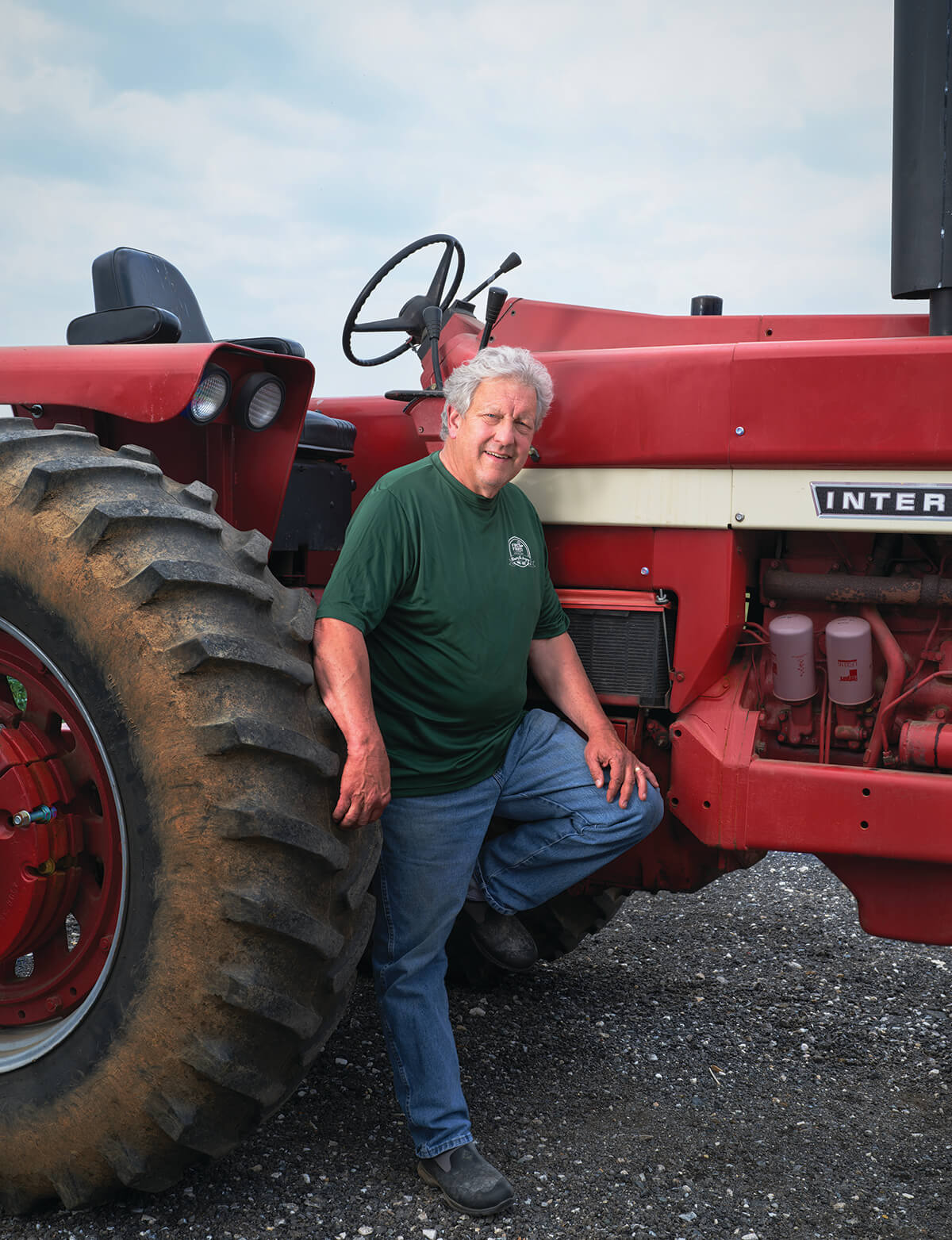GameChangers
This Northern Baltimore County Farm Donates Millions of Pounds of Produce Annually
Executive director Richard Bernstein left his career as an investment manager to manage thousands of volunteers at First Fruits Farm.

Richard “Rick” Bernstein, 66, spent most of his career managing money, not vegetables. About six years ago, the devout Christian left his job as an investment manager (and one of the early partners at Brown Advisory) “to become a gardener” full-time at First Fruits Farm, the nonprofit he began. The farm grows food solely for those with food insecurity on 281 acres in northern Baltimore County. It donates a million pounds of potatoes, almost 700,000 pounds of green beans and sweet corn, 100,000 pounds of tomatoes, and 4,000 dozen eggs annually, partnering with the Maryland Food Bank, the Central Pennsylvania Food Bank, Catholic Charities USA, and dozens of other food banks, pantries, churches, and schools. To accomplish this, volunteers—from schools, churches, and businesses—come every year to the farm to harvest, help, and learn about agricultural life.
You left a career in investment management. How did you become a farmer?
The beginning, 25 years ago, starts with my family moving out here, having a garden on a third of an acre. Then we moved to the farm that became First Fruits Farm—there were several transitions along the way. Our church got involved [distributing food to those in need]. It was an acre, and then it went to two acres, and then four acres, and then eight acres. And then my pastor was like, “Time out, you’re killing me. This is too much, you know, you need to be a separate nonprofit.” So, we became a nonprofit in 2004. Today we have nine full-time and several part-time staff that run production. Last year we had about 16,000 volunteers that came here. We have about 60 or so what I call “regular” volunteers. Those are the men and women that make the place go.
How much and what kind of food do you grow?
Most years, we grow about 2 to 2 1/2 million pounds of produce. The big six are potatoes, sweet corn, snap beans, cabbage, zucchini, and tomatoes. And then it drops down from those big six to smaller quantities of peppers, kale, collards, broccoli, cauliflower, pumpkins, and things like that. But it’s designed, after many years of working with the food banks, to be food that people like to eat, that’s versatile, travels well, and can keep for a while unrefrigerated.
So potatoes instead of, say, micro-cilantro?
In the early days, we did grow a lot of lettuces, and then what we found was that by the time it got to, you know, Manna Bible Baptist Church in Pimlico, within several days they were telling me they had to throw it all out, which was awful. So, we stopped. Now with the stuff that we send them, you know, green beans, if they’re kept in a cool dark place they can have them for the better part of three or four days. So that’s how what we call “the menu” developed.
You only have nine full-time employees and are run largely by volunteers. How does the process work?
For many, many years, the drill was we’d get thousands of people out here for two or three hours, harvest mass quantities of fill-in-the-blank, put it in these big totes that hold anywhere between 500 to 1,000 pounds depending on the density of the vegetable, and then ship it to the food banks or to places like big churches in West Virginia. And then people would do the packing and packaging themselves. When COVID hit, everything changed. [Those places] said, “Hey, we can’t have people in the warehouse. You can’t send us anything other than finished product; you’ll have to do all the bagging and the boxing.” So that was an enormous unscheduled expense, over $100,000 that we didn’t plan on. That was tough; we had to figure out how to do it. We didn’t have a building. [One was completed in 2023.] We’d be outside at night with all these Calvert Hall kids with headlights shining in the parking lot, bagging 25,000 pounds of green beans.
It seems like the farm is doing a lot more than growing corn and tomatoes. Does it still have that larger purpose for you?
The farm needs to be serving more. There are so many needs. And part of it is building community, real Christian community. So how do we bring people from all different communities together? What’s so beautiful about the farm is it is a platform for people of varying backgrounds to get together for a short period of time, two to three hours, to do something in common together, and it’s going to bless other people. Hopefully some good things come. It takes time. We don’t want to be perceived as if we have all the answers. And so we’ve tried to position the farm as a resource for you, if it works for you. [My wife] Carol said to me, “God is always doing a new thing. And maybe you need to be more attuned when He wants you to focus on something different this season. It’s not your place. It’s His farm. You’re just the steward.”